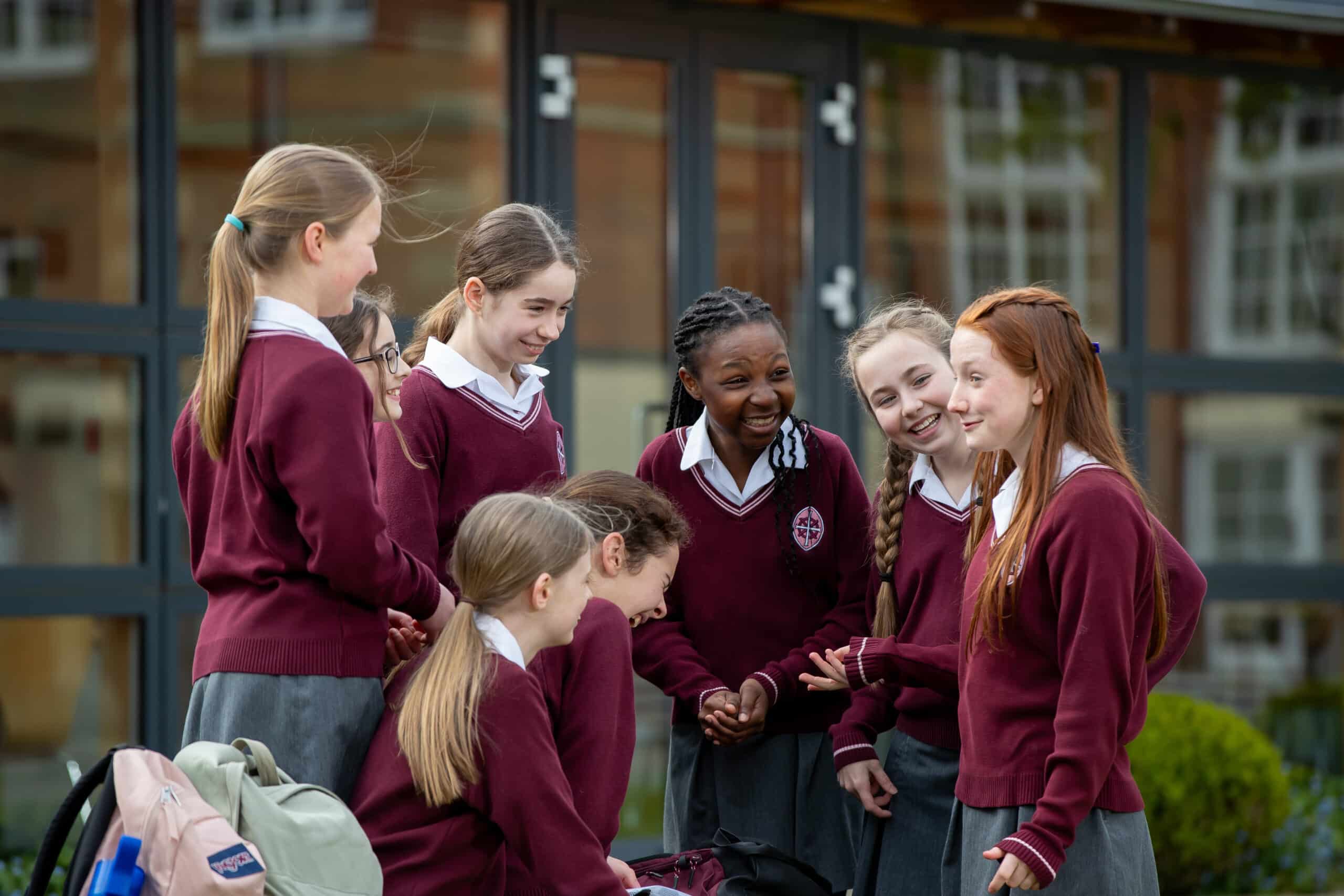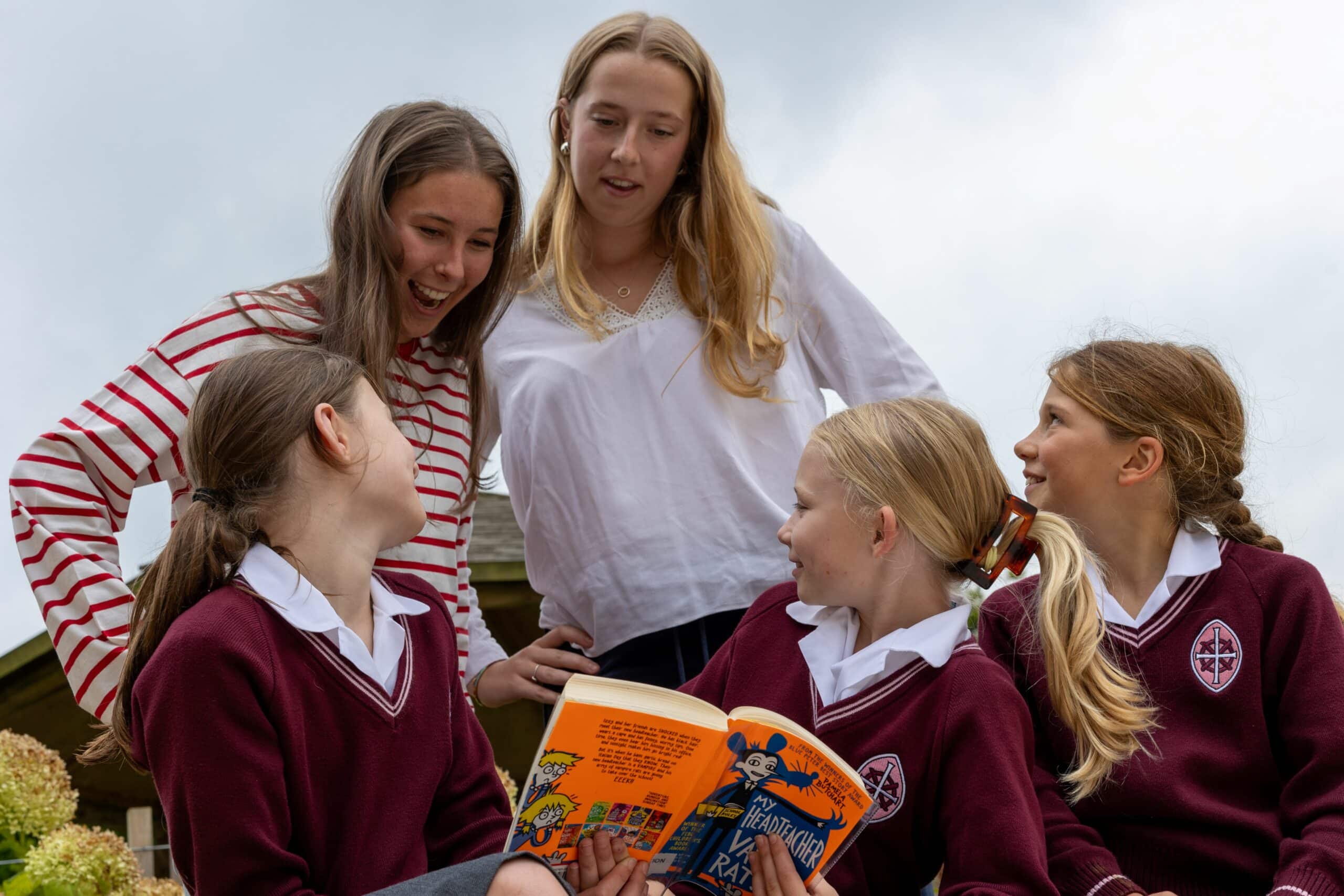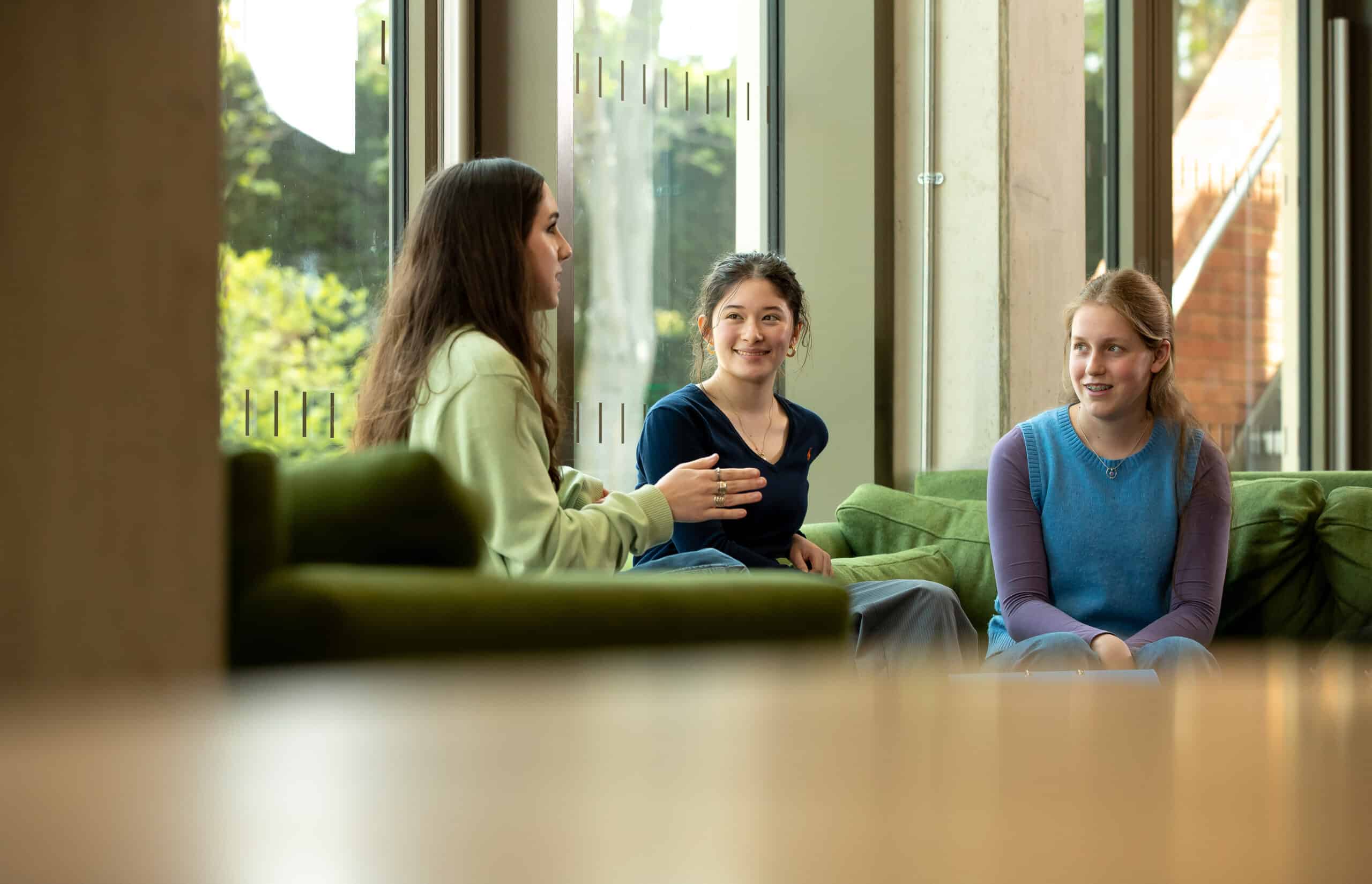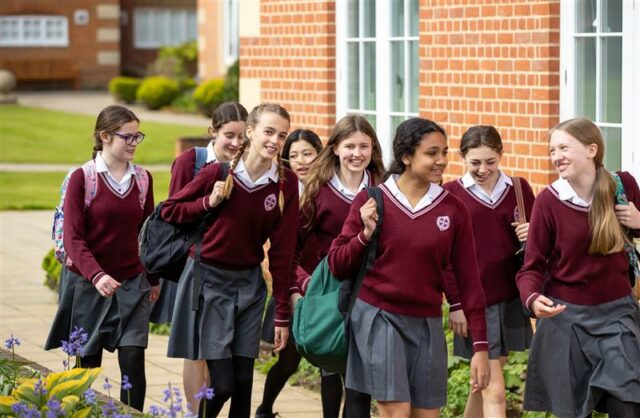This year we were able to rejoice in true HelKats fashion that St Kate’s Day was back to the accustomed style of pre-Covid celebrations! We began with a whole school Eucharist in YPH which was streamed to include the wider school community and alumni across the world. On this my second St Kate’s Day, I decided to focus my address on St Helen as there are particular threads that weave our continuing story together with the Chapel Centenary – which begins a year of celebrations on 6 December 2022. The cornerstone for the Chapel having been laid on this date in 1922. My address is below – do look out for our new altar vestments in the liturgical red for saints and martyrs, and the stole which now bears both St Helen and St Katharine.
Address for St Kate’s Day Eucharist 2022
In 312AD, the Roman Empire was up for grabs. Its previous emperor, Diocletian, divided the realm between two senior and two junior emperors, but the complex arrangement has collapsed. The successors are at one another’s throats. At the time a young general called Constantine, was one of Diocletian’s co-emperors, he has military successes under his belt, but now he faces a formidable veteran with a larger army and a better strategic position.
Constantine realises that he needs help from a power greater than himself, but who or what? He has his doubts about the traditional Roman gods. So he prays earnestly that the true God, whoever that may be, will “reveal to him who he is, and stretch forth his right hand to help him.”
He does not know it yet, but that prayer will change the course of Christian history as well as of western civilization. Later he will tell his friend Bishop Eusebius the incredible story of that hour. When Eusebius reports it in his history, he admits it is hard to believe. So what exactly happened?
Constantine suddenly sees a bright cross of light emblazoned against the noonday sky and upon it the inscription: “In hoc signo vinces” —“In this Sign [you will] Conquer.”
It brings Constantine the assurance he needs. He accepts it as the answer to his prayer and orders his soldiers to inscribe crosses on their shields in place of the imperial eagles. Encouraged by his vision, Constantine is victorious against his rival Maxentius at Rome’s Milvian Bridge.
Constantine becomes the first Christian emperor to officially recognise the Christian faith, granting freedom of worship, and bringing to an end the persecution of Christians throughout the Roman Empire which had raged virtually from the time of Christ’s death.
You might wondering what all this has to do with today?
Well – our patron Saint Helen was Constantine’s mother.
Helen, like her son, also became a devout Christian and was sent by the Emperor to the Holy Land in 326AD to recover what she could of the artifacts of Jesus and his apostles, but particularly those associated with Christ’s death and resurrection.
Her task wasn’t an easy one and history tells us that every attempt was made by Emperor Hadrian to destroy all traces of the site where Jesus had been crucified and buried. He had hoped to extinguish the faith of Christians by making it impossible to worship at the site of Jesus crucifixion and resurrection. He had the ground around Golgotha covered with earth and temples and statues to Jupiter and Venus built on the site.
The tomb of Jesus was very near to the site of his crucifixion and the Gospels tell us that the bodies of Jesus and the two criminals crucified with him were removed quickly as the Feast of the Passover was rapidly approaching. The three crosses were hurriedly buried into the ground at the place of crucifixion, as it was customary for the Jews to bury the instruments of the death with the corpses of criminals as they considered those objects defiled.
Helen arrived in Jerusalem around the year 326 and she began an exhaustive investigation to find the site of the crucifixion. With the help of a local Jewish man who acted as her guide the site of the tomb was established.
Emperor Constantine ordered the pagan temples built over the top to be demolished, and the site excavated. First the tomb was discovered and then three crosses along with other objects like the nails and spear used to pierce Jesus’ side.
The title that Pilate had put on the cross of Jesus had been lying separate from the crosses so tradition tells that Helen wasn’t sure which cross had been the cross of Jesus. But with the help of Macarius – Bishop of Jerusalem – the true cross was identified.
It is said that he took the crosses to a well-known lady in Jerusalem who was sick and at the point of death. And whilst praying he laid each cross in turn on the woman and when the third cross touched her the woman suddenly opened her eyes and got up – all her strength restored.
Helena then built a church over the place where she had discovered the true cross – known to us today as the Church of the Holy Sepulchre. Part of the true cross she sent back to Rome and she also left a part in Jerusalem this can be seen in the church that had once served as her own private chapel – The Church of the Holy Cross.
We are incredibly blessed here at school to have our own Chapel which you might not have known is officially titled the Chapel of the Holy Cross. On the 6 December 1922 the foundation stone was laid for our Chapel so next month we begin a year of celebrations to mark the Centenary.
How many of you have wondered about the Latin inscription above the Chapel door? You might now recognise where it comes from. The words given by God to Constantine: ‘In hoc signo vinces’ – ‘in this sign you will conquer’. A fitting motto for us as HelKats to take out into the world.
Now take a look at the cross below motto – the Chi Rho is one of the earliest forms of Christogram, formed by superimposing the first two (capital) letters—chi and rho (ΧΡ)—of the Greek word ΧΡΙΣΤΟΣ (Christos) in such a way that the vertical stroke of the rho intersects the centre of the chi.
What’s also really exciting is that the Chi-Rho is sometimes known as the ‘Incarnation Initial’ as seen here at in the Book of Kells at the beginning of Matthew’s Gospel, the first Gospel. In this sense the artwork was an entrance way, a doorway, into the story of the life of Christ. So each time you step into Chapel underneath the Chi-Rho it’s a reminder that we too are part of God’s ongoing story.
And to celebrate Chapel’s centenary we commissioned new altar vestments in each liturgical colour that have the Christogram running through them as you can see on the burse and veil. Red stoles are worn by priests to either mark Saints’ days where it represents their death as a martyr, or to represent the flames of the Holy Spirit.
So our new red stole – in school colours – has both our patron saints represented on either side. St Helen with the true cross and St Katharine with her wheel.
As we go out today to celebrate the life of our Saints – let’s take Constantine’s sign out with us into the world encouraging us to overcome all obstacles in our path, knowing that like Joshua and Peter, from our readings today, we will find the courage to conquer any of our own fears, insecurities, and doubts; and with the full confidence of God on our side, believing like St Helen, we too can make a difference and do the most amazing and courageous things. Amen.












